Tag Archive for: promotion
A wee spot
Here’s a fun little spot illustration I did for the Renaissance & Baroque Society of Pittsburgh, this time to promote a concert of ancient Scottish and Irish music—both sacred (church liturgy) and profane (drinking songs). The costume is from a painting of a highland aristocrat wearing his hunting clothes.
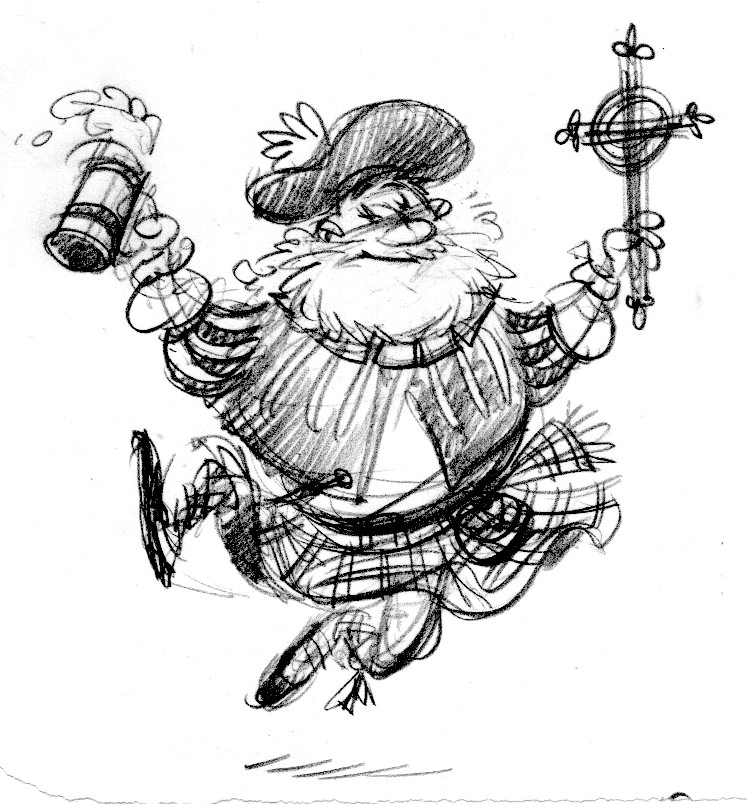

Weird sisters

“Double, double toil and trouble; Fire burn, and cauldron bubble.” Macbeth (Act IV, Scene I).
I did this painting as a self-promotion piece a few years ago. Promotion is critical to any business; it’s especially important to illustrators. We are, by and large, self-employed: we work for ourselves. We operate on small budgets, so we’ve got to be clever about how we let the world know we’re here.
This image appeared in a creative directory, Picturebook. A creative directory is a catalogue of illustration (or photography) that comes out once a year and is sent to art buyers, like art directors. The art buyers receive the directory for free. The illustrators featured inside the directory paid for their page. That fee covers the cost of producing and distributing the directory to the art buyers.
Most creative directories cover a spectrum of markets, from editorial to advertising. Picturebook concentrates on just one slice of the illustration market: children’s books. A page in Picturebook works more effectively for me because it goes specifically to the audience I want to reach. So far as I know, ad agency AD’s don’t receive Picturebook.
Incidentally, this lovely image is available as a print.
It’s October…
UPDATE! If you live in the Pittsburgh, Pennsylvania area and like to hear really old classical music, mark your calendar Oct 24 to attend The Medieval Beasts concert. I’m told it’s a costume event, but didn’t see any info about that on the R&B website. Go—you’ll have an enjoyable evening and meet some fun people.
Here’s a little spot illustration I did a couple of years ago for the Renaissance & Baroque Society of Pittsburgh. For October that year they’d booked a group called Artec who did a concert of Graveyard Music. So, we promoted it with a postcard. A couple of sketch ideas—
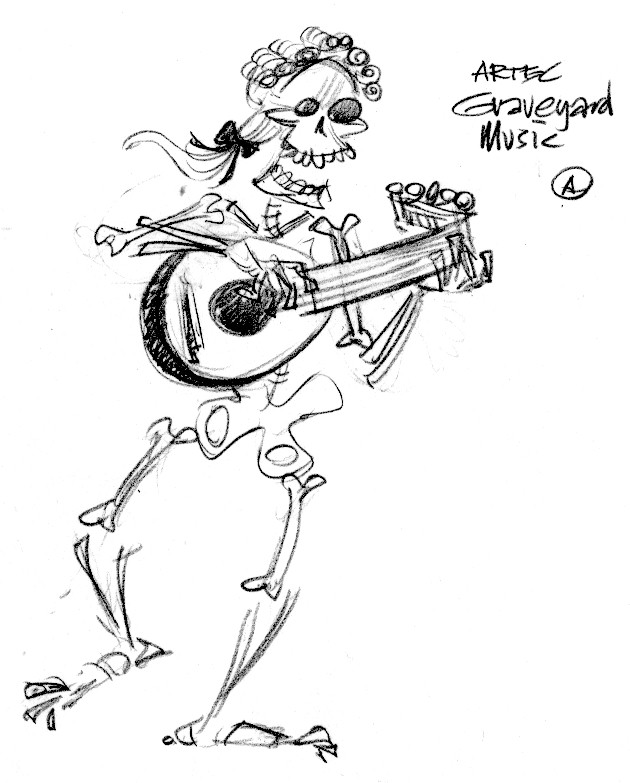
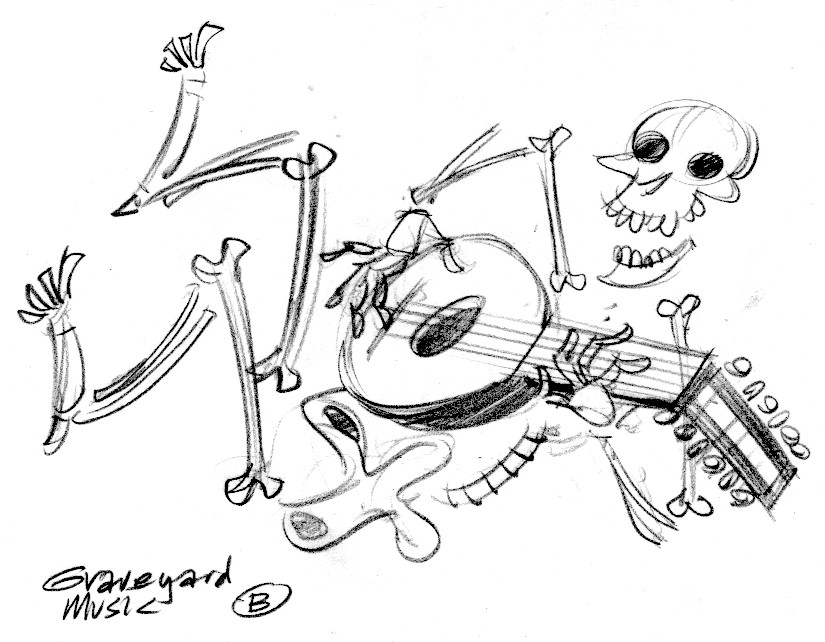
Ann Mason—the exec director—liked sketch A.

Circus posters
Pete & Fremont and Pete’s Disappearing Act are circus yarns spun by the incomparable Jenny Tripp. Both stories are narrated by Pete the poodle and seen from the point of view of the animals in Circus Martinez.
To promote these two titles, Jenny and I thought it would be fun to produce a few circus posters on a small scale—circus stickers. I love old circus posters—who doesn’t?—and kids love stickers. Here’s a sample of some vintage circus posters:
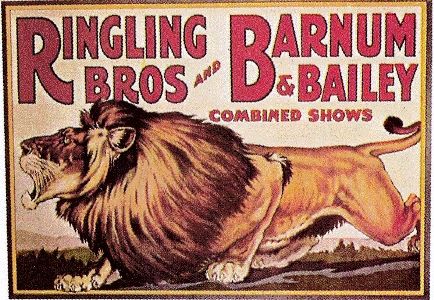

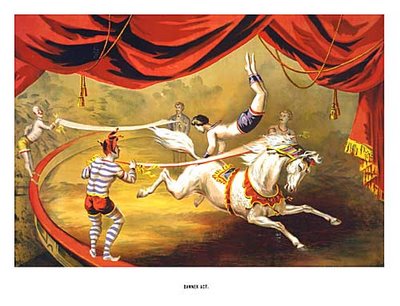
You get the idea. Since the focus of the stories is on the animals, each poster would feature one of the animal acts. I worked up some rough thumbnail sketches.



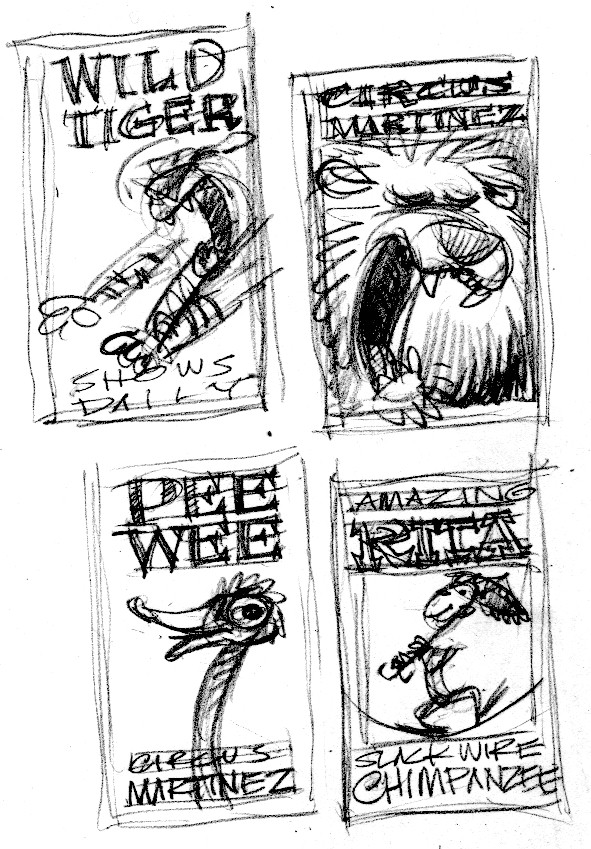
Jenny wrote some better copy to replace the dummy copy shown in the rough sketches.
We were bankrolling the production of these stickers ourselves, so I needed to come up with an inexpensive way to print them. You can get self-adhesive label stock in 8 1/2 x 11″ sheets. I fit all the sticker designs into an 8 1/2 x 11″ format, so the printer could print 10 stickers as one piece of art—then guillotine them as individual stickers. Here’s the layout with tight sketches:

I painted all the stickers as one piece of art (one scan instead of 10 saves bucks) around 125% of the printed size. I wanted to work a little bit bigger so my lettering would tighten up when it got reduced. I’m showing you 2 different pieces of the finished art here, because I can’t fit the whole thing onto my Playskool scanner:
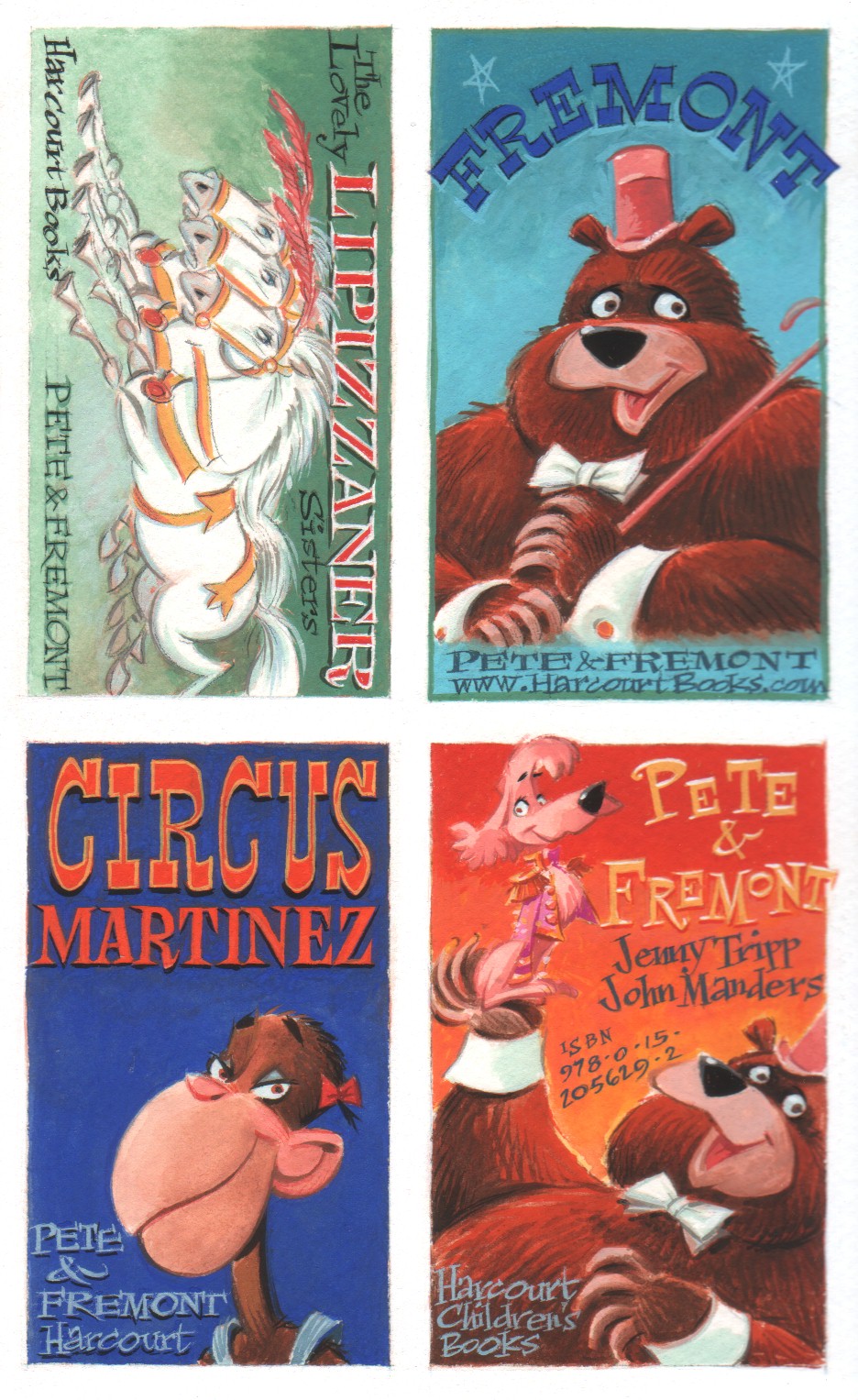

How To Become An Illustrator, Canto IV
Step Four. Promote.
Once you’ve got your portfolio together, you want people to see it—specifically people who can hire you.
Let’s make this an assault on multiple fronts. You young illustrators have many media available for self-promotion.
The world-wide web. Get yourself a website. It doesn’t need to be fancy, just a place to put up some samples of your work and your contact information. Nowadays everybody expects to be able to find you on the web, so make sure you’re there. Because we live in an age of technological marvels, you can build a website yourself, for free: http://www.moogo.com/. Here’s a review.
I’ve noticed illustrators have been posting their samples on flickr, which doesn’t cost you anything, either. Same with Facebook.
Print media. Even though I have a web presence, I rely on print media to let potential clients know I’m there. I strongly recommend that you consider a postcard mailing campaign. This will cost you a few skins, but I’ve found the return on investment to be worthwhile. I go to Modern Postcard to print my postcards. They’re in California and all they do is print postcards. A batch of 500 will set you back around $120.00. Once you go to their website, they really take care of you. There are downloadable templates so you may design your postcard to fit US postal requirements. You may submit everything to them electronically. They’ll turn your job around in less than 2 weeks.
Put a show-stopping four-color image on the front of your postcard, and tell everyone how to find you on the back. If you can afford it, consider sending a series of postcards that tell a story. I did this and I got a great response from art directors—and a couple of jobs. I told a story in four images, and mailed my postcards every Monday for 4 weeks. By the time the fourth postcard was mailed, the ADs were waiting for it.
You’ll need a mailing list of people who might hire you. When I began, I wanted to break into children’s publishing, so I needed a list of art directors who work for children’s magazine and book publishers. I transcribed my list from Children’s Artists’ & Writers’ Market. If kids’ illustration isn’t your bag, a more general list can be gleaned from the 2009 Artist’s & Graphic Designer’s Market Of course you can buy mailing lists, but I prefer to build and maintain my own. Don’t forget to send a postcard to every member of your family and everyone you’ve ever met. You never know who may turn out to be an important contact.
Creative directories. These are catalogues of illustrators—you buy a page, put your images on it and the directory is sent out to zillions of art directors. This can get pricey. I stick with Picture Book only. I’ve tried some of the others, and I’d never been able to establish that I got a return on my investment; that is, the page didn’t generate more fees than I paid for it. Picture Book is a small slice of the illustration market—children’s only—which is the more effective way for me to promote myself.
Competitions. Don’t necessarily generate sales.
All your promotion should be run at a profit. If you spend a dollar on promotion and don’t get more than a dollar back, stop doing that kind of promotion and try something else.
Get this book and read it: Your Marketing Sucks.
DON’T e-mail art directors with unsolicited samples.
John Manders Illustration
Children's Books
Advertising, Editorial
Caricatures, Comic Strips
School Assembly Visits
Drawing Demonstrations
412-400-8231
Error: No feed found.
Please go to the Instagram Feed settings page to create a feed.






